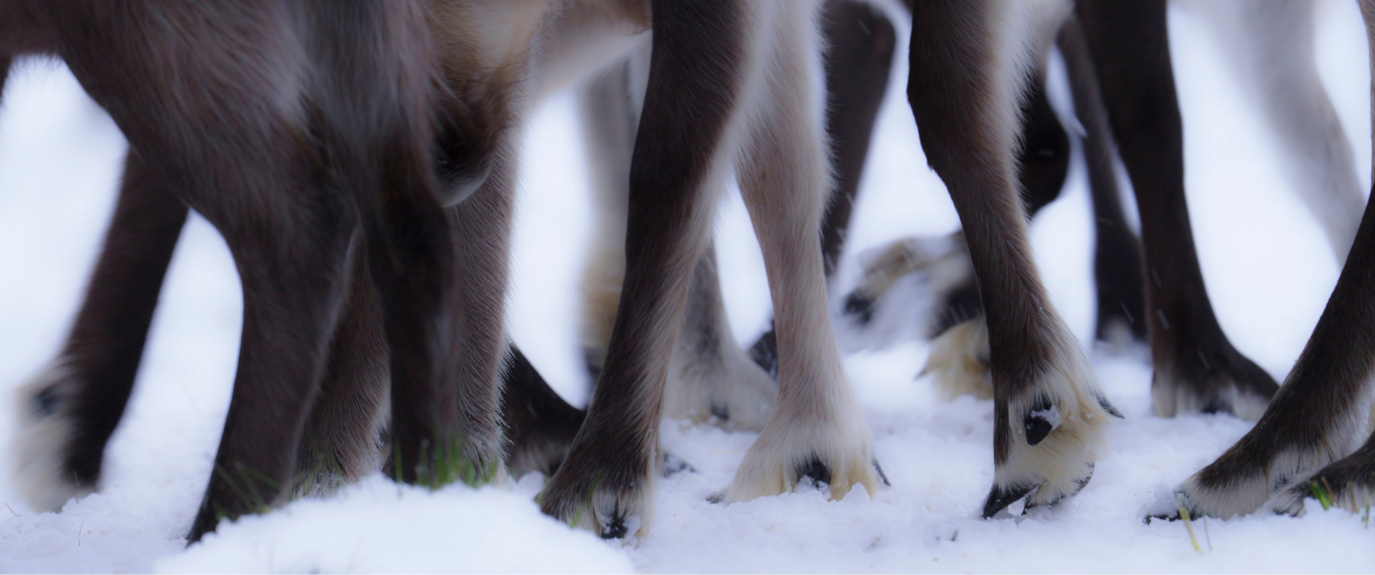
Dan Jåma, video still from Leave No Trace, 2021.
Arctic Highways
Whitehorse, Yukon
Presented by
Yukon Arts Centre

Embark on a journey along the Arctic highway of culture and life that stretches from the past into the future – without ever passing a border – in this exhibition featuring Twelve Indigenous artists from the Arctic region.
Across the Arctic landscape, culture and art has traveled effortlessly along with the movement of the wind, the sun and our reindeer herds, creating a network of Arctic Highways. Highways that are cultural and spiritual, real and thriving – but as invisible as the system of national borders that have imposed their rigidness and weight upon us, pitilessly trying to nullify the free flow of ideas and identity connecting our souls.We are Indigenous peoples who live in different countries and on different continents, and yet regard ourselves as peoples with kindred spirits. The borders of nation states, arbitrarily drawn without regard to the landscapes of our ancestors, have been used to group the Sámi people, and to set us up to fight against our brothers and sisters living on the other side, fencing in and silencing our voices and our knowledge.With this exhibition we want to tell our own story, through our own experiences, using our own forms of expression. We want to provide opportunities to think broadly about what it means to be unbounded, pointing to the limits that borders set, not just for indigenous people, but for all of us.
See Nordic artists below.
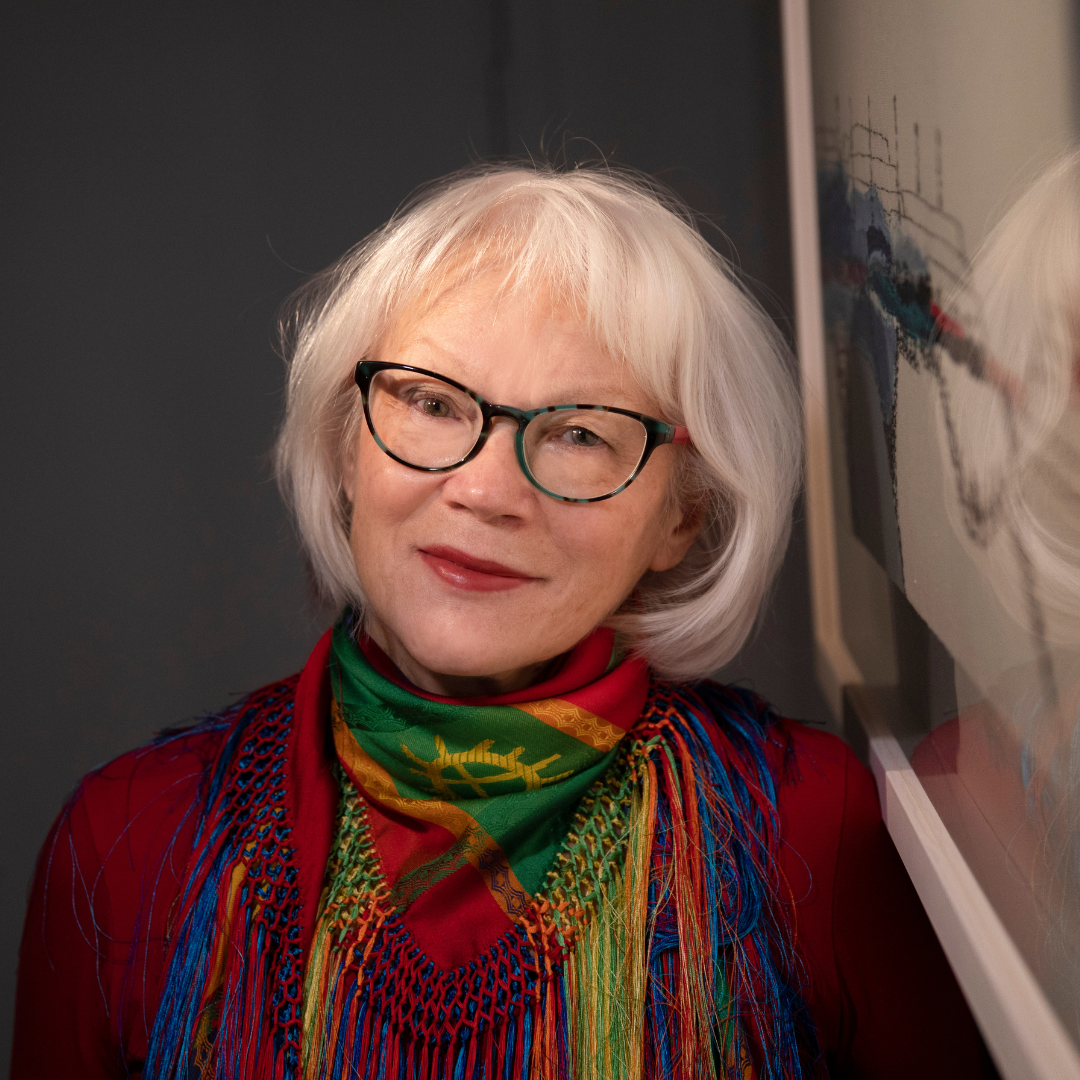
Britta Marakatt-Labba, b. 1951, was born and raised in a reindeer-herding family. Their winter pasture was in Swedish Sápmi, and the summer grazing period was spent on the Norwegian side of Sápmi. She is educated at the School of Design and Crafts at the University of Gothenburg (HDK).
Marakatt-Labba works with narrative, or storytelling, embroidery. Her images are miniature worlds created with needle and thread. The images depict various events and scenes from everyday life, mythology, political reflections and tales about Sámi culture and history.
Her work has been exhibited at the following venues: National Museum of Art, Architecture and Design, Oslo, Norway; Moderna Museet, Stockholm, Sweden; KODE (art museums and composer homes) Bergen, Norway; Malmö Art Museum, Sweden; Uppsala Art Museum, Sweden; Nord Norsk Kunstmuseum (museum for northern Norwegian art); RidduDuottarMuseat, Karasjokk, Norway; Korundi – Rovaniemi Art Museum, Finland; The Anna Nordlander Skellefteå Museum, Sweden, and Skissernas Museum, Lund, Sweden.
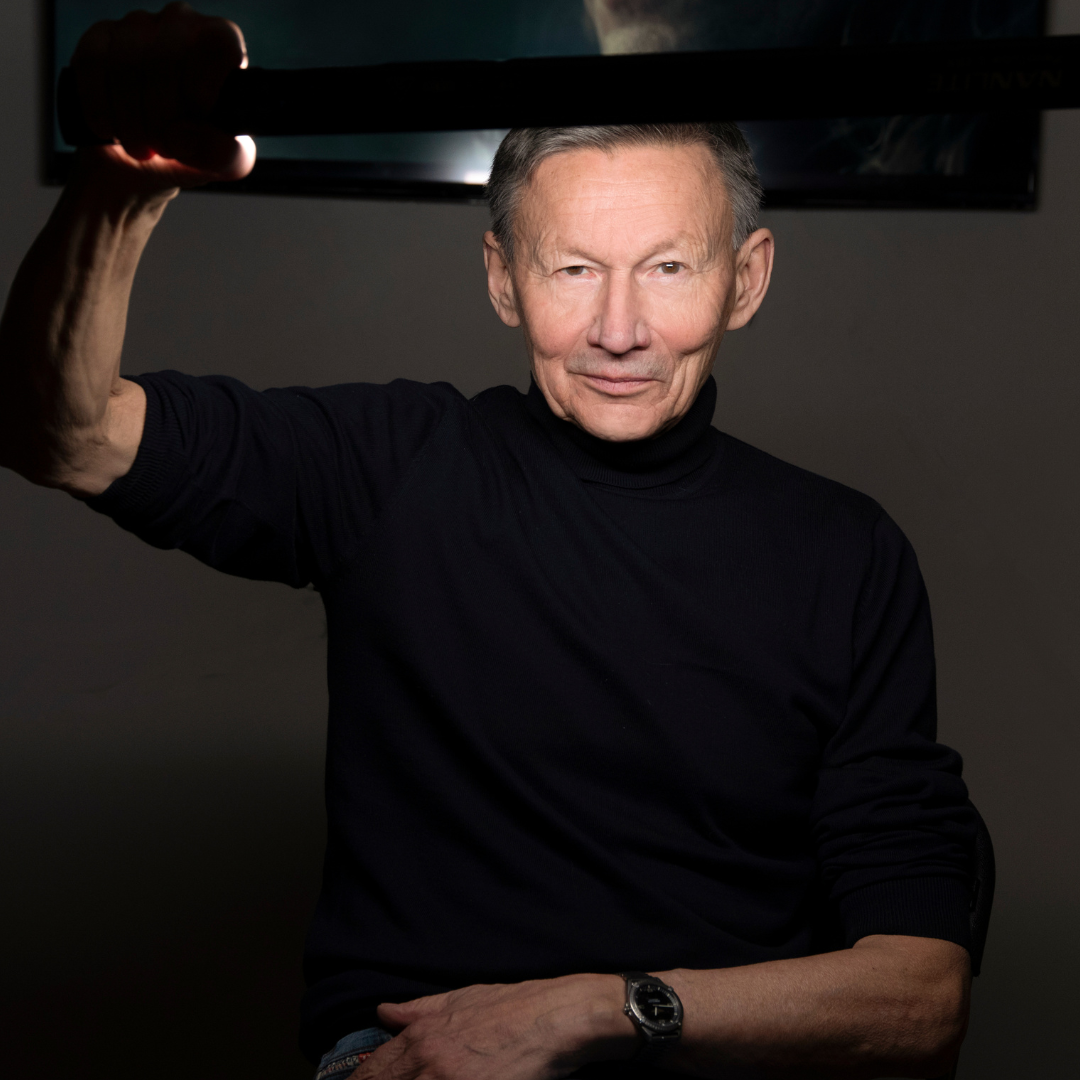
Dan Jåma, b. 1953, is a filmmaker and still photographer living in Luleå, in northern Sweden. He grew up in a reindeer-herding family in Norway. At the age of 23 he was employed at the Swedish National Television as a cinematographer. Nineteen years later he started to work as a freelancer to be able to work with still photography and to direct his own films.
Jåma also works part time as a teacher in television journalism at the Sámi University of Applied Sciences in Kautokeino, Norway. Dan has, since 2011, been chairman at the South Sámi Museum in Snåsa, Saemien Sijte, Norway. He is multitasking between filming documentaries all over the world and working with book projects in Sápmi. Dan is represented in RiddoDuottarMuseat, The Sámi Museum in Karasjok.
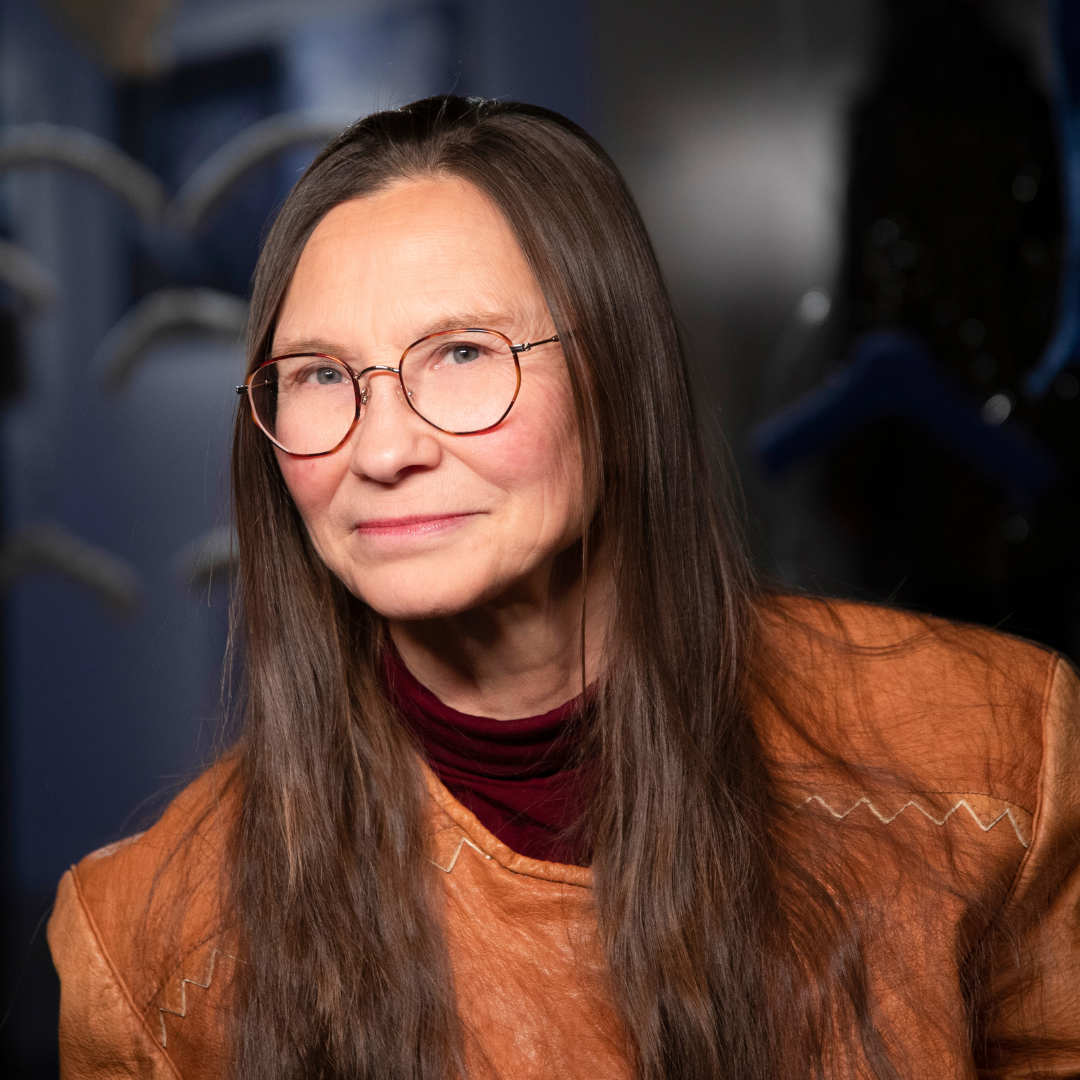
Gunvor Guttorm, b. 1958 in Karasjok, Norway, is a professor in duodji (Sámi arts and crafts, traditional art, applied art) at Sámi allaskuvla/Sámi University of Applied Sciences, Guovdageaidnu/Kautokeino in Norway. Her research is interconnected with cultural expression in the Sámi and Indigenous societies, especially duodji. The focus of her research deals with duodji in a contemporary setting, and Indigenous people’s context. She has written extensively about how the traditional knowledge of Sámi art and craft is transformed to the modern lifestyle.
In an Indigenous world, she has participated as invited speaker at Indigenous research congresses and has participated in exhibitions in Sápmi and abroad. From 2016–2018 she worked in a reference group for the exhibition Let the River Flow, organized by the Office for Contemporary Art, Oslo. She has also been editor, together with Harald Gaski and Katya Garcia Antón, of Let the River Flow. An Indigenous Uprising and its Legacy in Art, Ecology and Politics (Office for Contemporary Art Norway/Valiz Amsterdam, 2020).
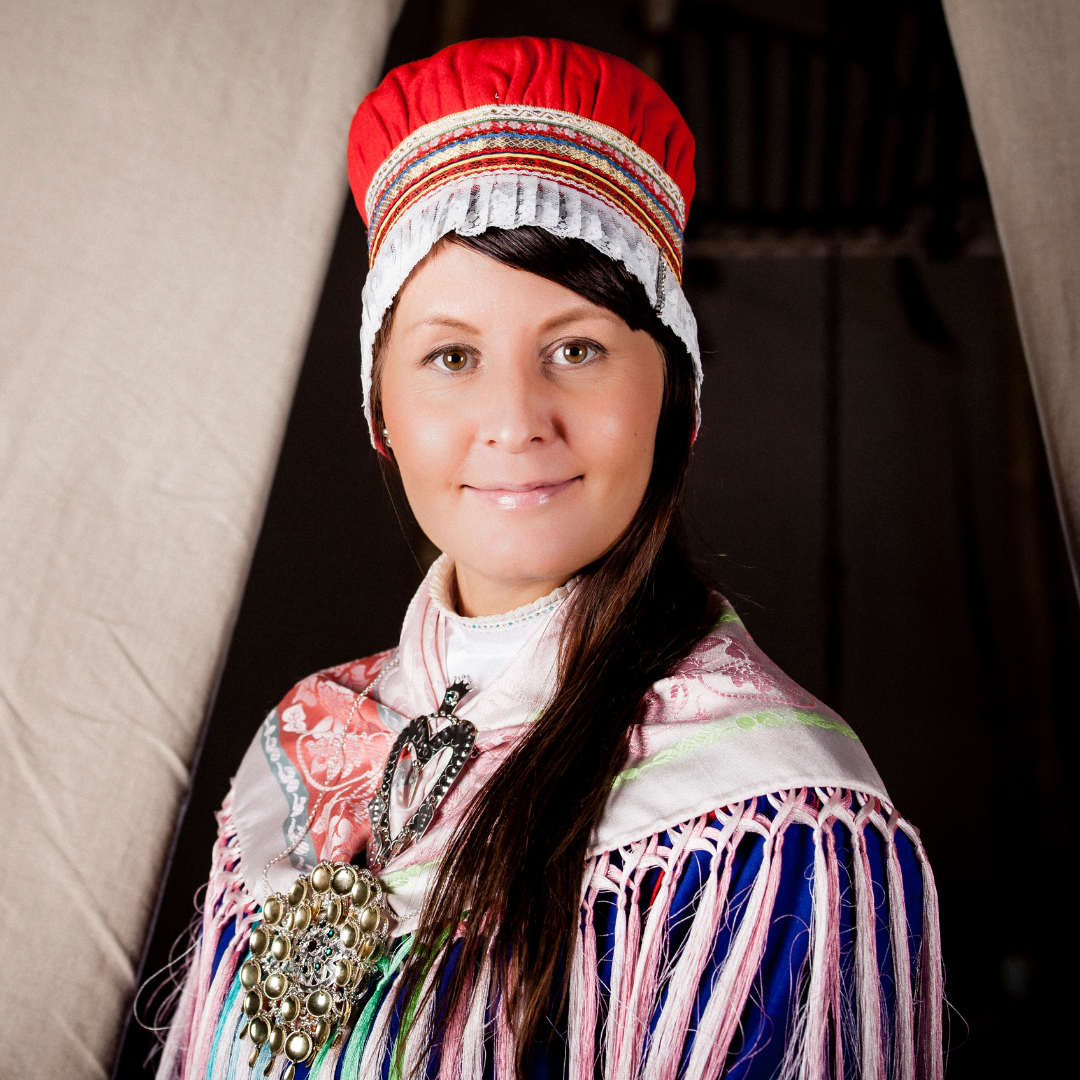
Laila Susanna Kuhmunen, b. 1978, is an artisan who lives in an area with two Sámi cultures: the Lule Sámi culture and the North Sámi culture. Laila Susanna’s family was forced to resettle from the north to Jokkmokk in Sweden almost one hundred years ago. This historic event is reflected in her artistic handicraft. The two-year program in Duodji at the Sámi Education Centre in Jokkmokk and a Master’s degree from the Sámi University of Applied Sciences in Kautokeino, Norway, gave her the formal background to practice her art and craftsmanship.
Laila Susanna’s creativity emanates from the traditional duodji, Sámi handicraft, but at the same time it also expresses itself through methods that are a symbiosis of both the traditional and the modern.
She has exhibited her work at the Sámi Center for Contemporary Art in Karasjok, Norway, and at the Sámi Duodji Center in Jokkmokk, Sweden, as well as the Silver Museum in Arjeplog, Sweden, and the TRAFO Art Gallery in Asker, Norway.
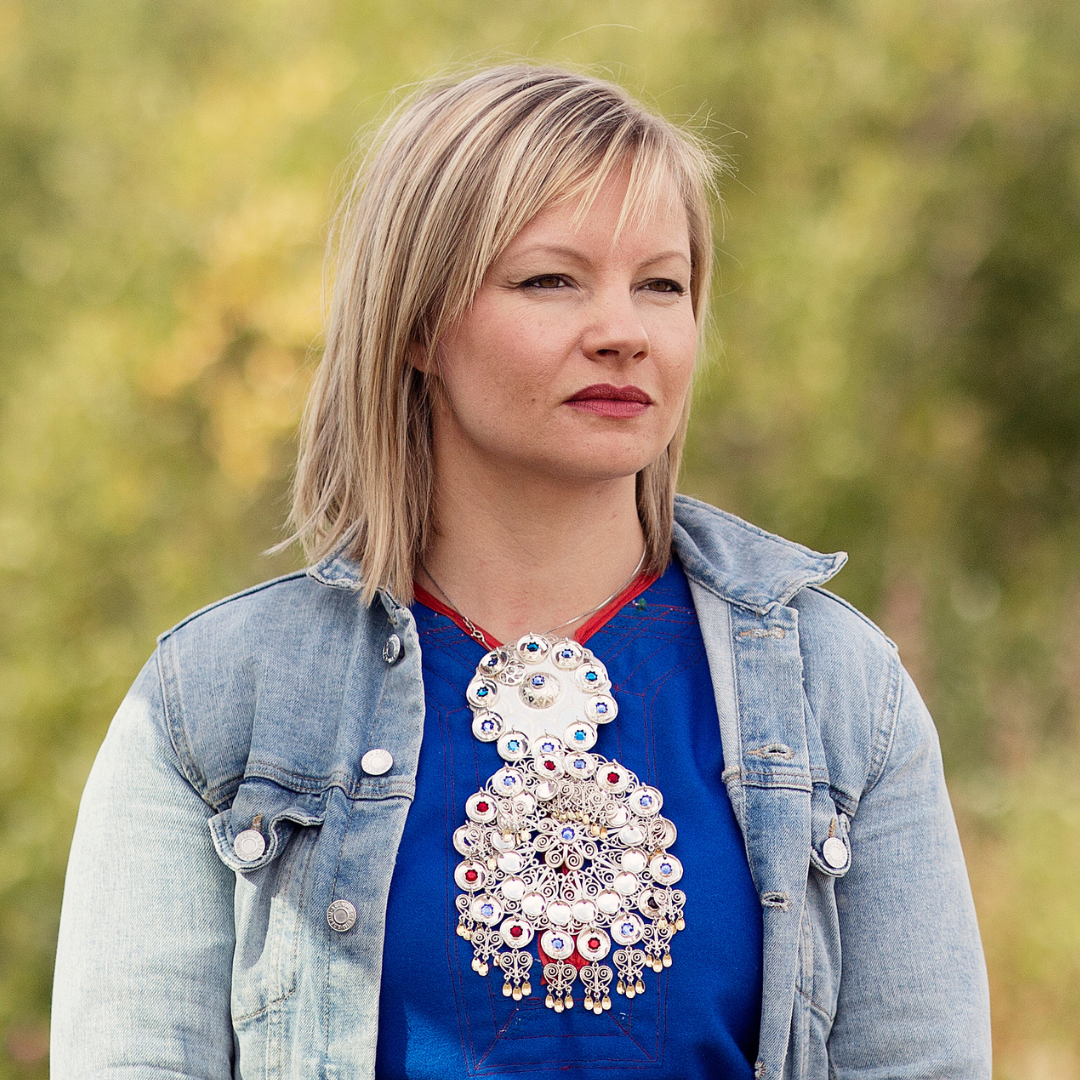
Máret Ánne Sara, b. 1983, is an artist and an author. She is from a reindeer-herding family in Kautokeino, Northern Norway, and currently works in her hometown. Sara’s work deals with the political and social issues affecting the Sámi communities in general, and the reindeer-herding communities in particular.
Sara has created posters, CD- and LP-covers, visual scenography and fabric prints for a number of Sámi artists, designers and institutions. She is the initiator and founding member of Dáiddadállu Artist Collective Kautokeino.
In 2014, Sara was nominated for the Nordic Council’s Children and Young People’s Literature Prize for her debut book Ilmmid gaskkas (In Between Worlds).
Sara’s project Pile o’ Sápmi was presented at Documenta 14 in Kassel in 2017. In 2022, Sara will be one of three Sámi artists who will transform the Nordic pavilion into the Sámi pavilion at the Venice Biennale.
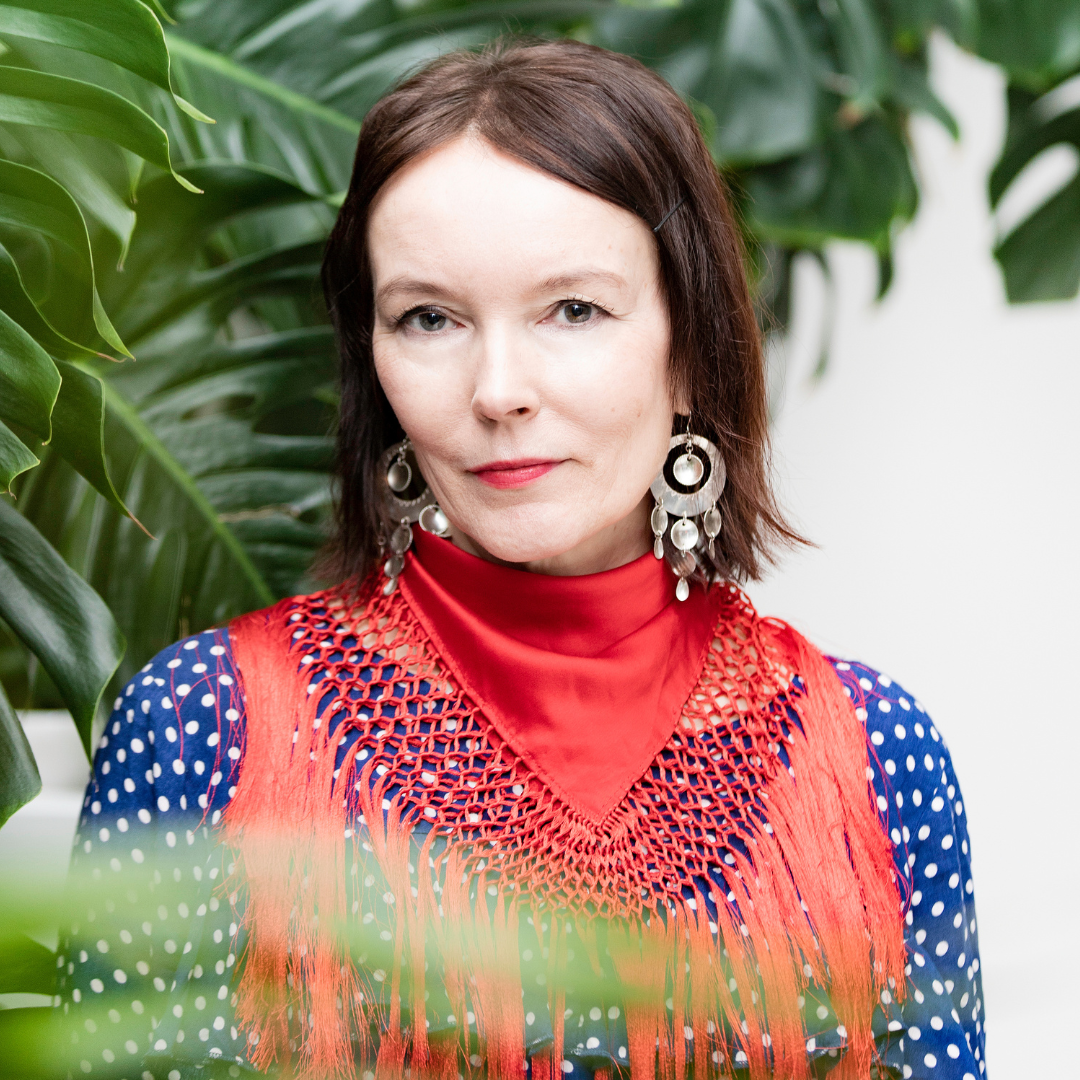
Marja Helander, b. 1965, is a Sámi photographer, video artist and filmmaker with roots both in Helsinki and Utsjoki. In her work, she has studied various themes, including her own identity between the Finnish and the Sámi culture. Since 1992, Helander’s work has been exhibited in two dozen solo exhibitions and over 50 group exhibitions in Finland and abroad.
In her art, Marja Helander often builds from her own background between two cultures, the Finnish and the Sámi culture. What drives Marja as an artist is curiosity and the willingness to always learn something new. “This is why making video art and short films has been so inspiring after a long career in photography,” Helander says.
At the 2018 Tampere Film Festival, Marja Helander was awarded the Risto Jarva Prize for her film Eatnanvuloš lottit, Birds in the Earth. The Mänttä Art Festival selected Marja Helander as the curator for the 2019 exhibition.
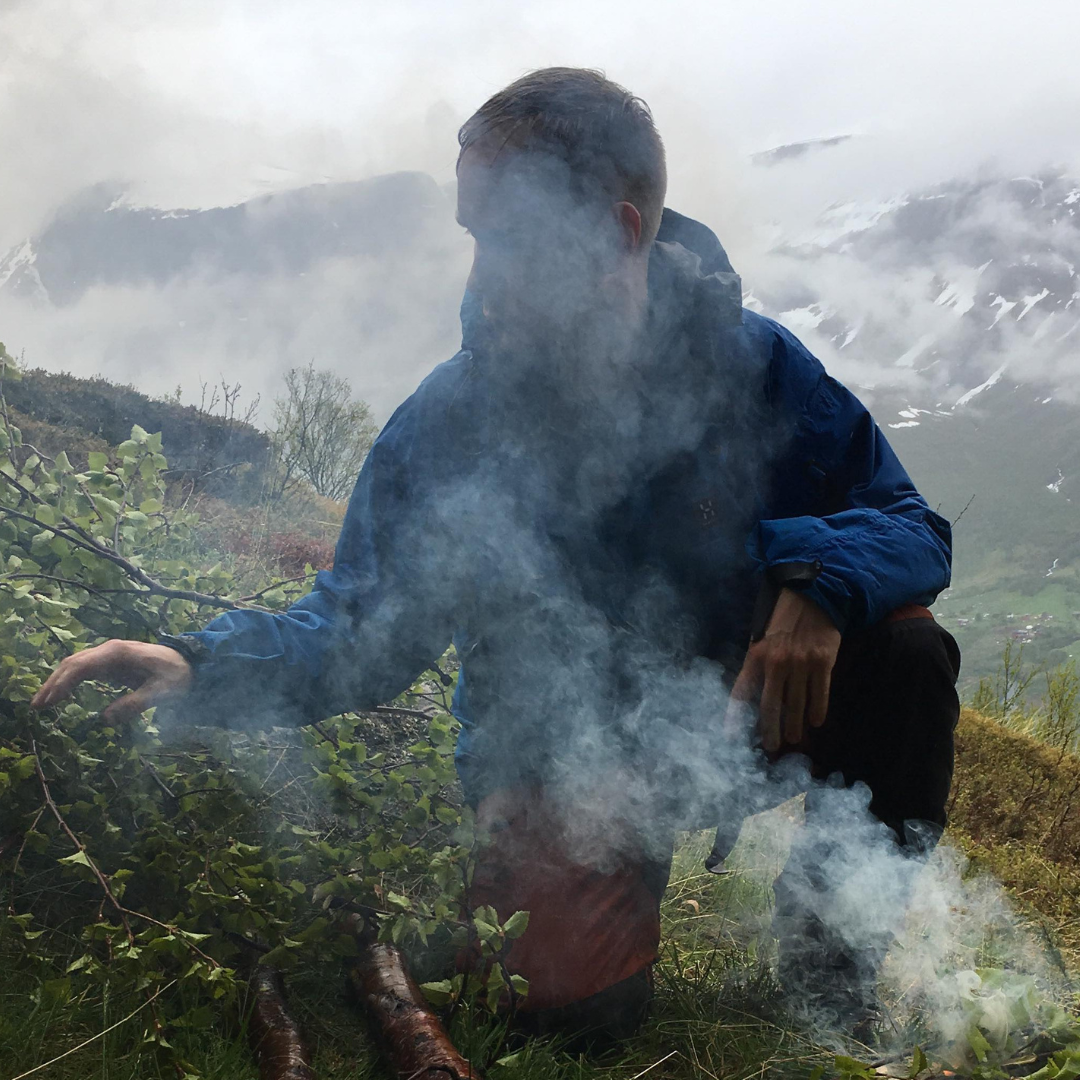
Matti Aikio, b. 1980, is a Sámi visual artist from the Finnish side of Sápmi. He has a background in Sámi reindeer herding culture. He holds an MA in contemporary art from Tromsø Academy of Contemporary Art. Aikio’s art has been exhibited in various countries in Europe, Asia and Latin America. He works with mixed media, photography, sound, installations, video, sculpture and text. His main interest as an artist is to try to offer the spectators a possibility to shift perspective on often marginalised issues.
Lately, Aikio has been focused on topics like the concept, the idea and the image of nature and how the indigenous cultures seem to be squeezed by the schizophrenic nature relationship of the nation states and capitalism. Aikio also performs as a DJ.

Olof Marsja, b. 1986 in Gällivare, is based in Gothenburg, has trained at Konstfack (University of Arts, Crafts & Design) Stockholm, and works mainly with sculptural expressions where the organic, industrially produced and the handmade are put together into ambiguous figures and objects. Here, the carefully carved wood, the cast metal, the hand-blown glass co-exist with the found and raw processed materials. In a playful and serious way, he addresses issues of identity, the present and history. The sculptures that emerge are hybrid figures that slide between categories such as visual arts, crafts, imagination, reality, man and animals.
Olof Marsja has recently exhibited at Havremagasinet in Boden, Göteborgs Konsthall, Bonniers Konsthall in Stockholm, 3:e Våningen in Gothenburg, Gallery Steinsland & Berliner in Stockholm, IKOLONI in Malmö, Stenungsunds Konsthall, and Gallery Box in Gothenburg.
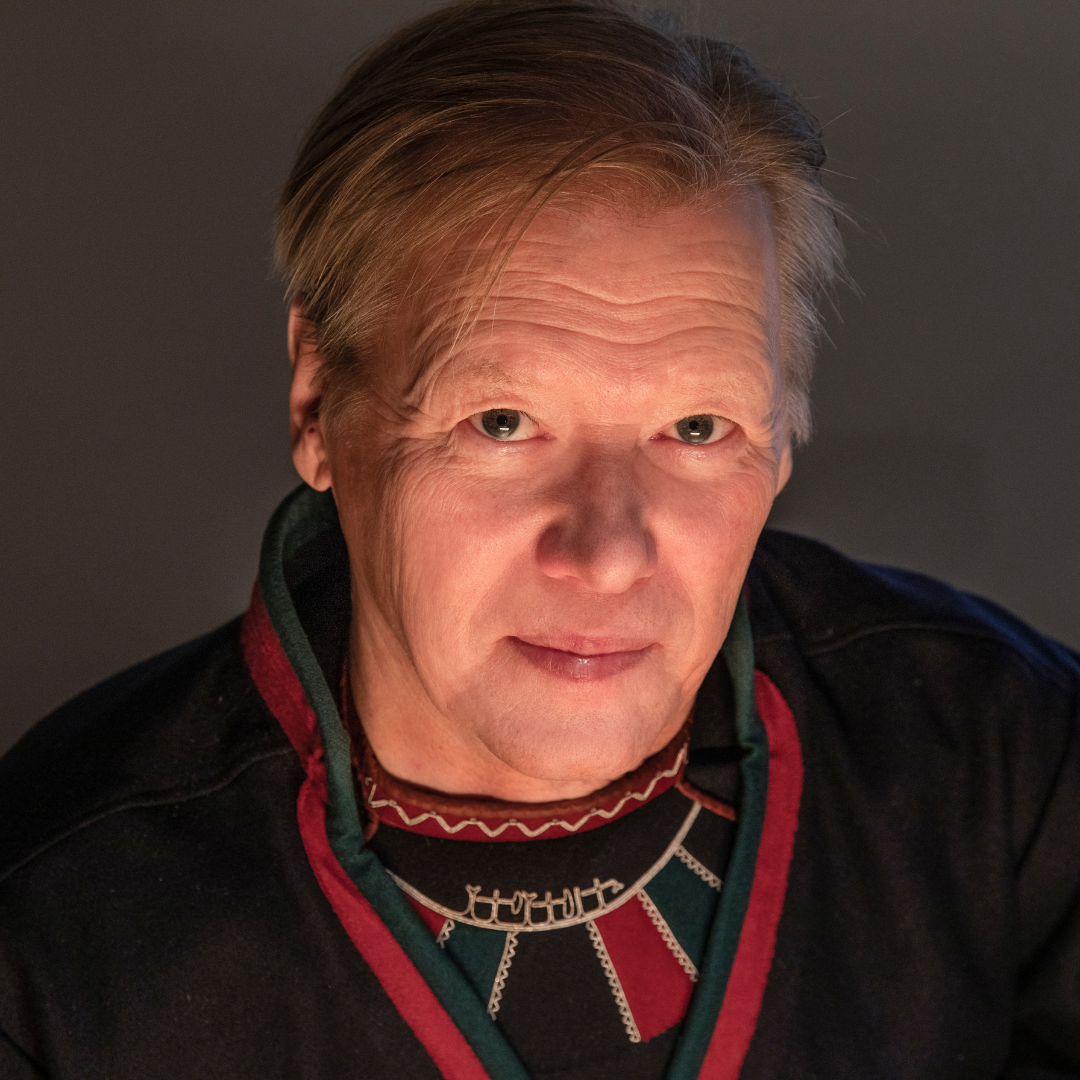
Tomas Colbengtson, b. 1957, grew up in a small Sámi village near Björkvattnet in Tärna, under the Arctic circle in Sweden. In his artwork, he asks how colonial heritage has changed Indigenous lives and landscapes, both of the Sámi and other Indigenous peoples. Having lost his mother tongue, the Southern Sámi language, he works with visual art, using Sámi history and collective memory as the source of his art. He is continuously experimenting with new forms of media and material, from overlay glass and metal printing to etching and digital art forms. This way, he seeks to assemble a language to formulate the loss but also rejuvenation of Sámi identity.
Tomas Colbengtson is the initiator of one of the first art residences for indigenous artists, Sápmi salasta / Sápmi embraces. His work has been featured in numerous international exhibitions. He is represented at the new National Museum of Art, Architecture and Design, Oslo, Norway and the Sami Parlament in Karasjok Norway.

